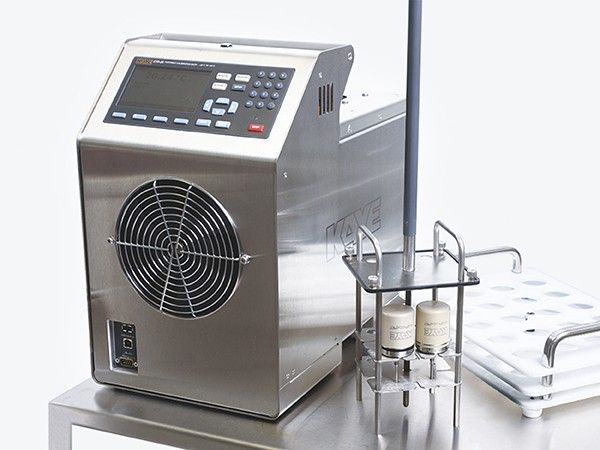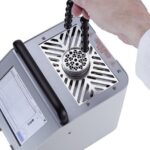Introduction
In the world of precise measurements and quality assurance, calibrators play a pivotal role in ensuring accuracy and reliability of instruments. Among the arsenal of calibration tools, Dry Block Calibrator and Liquid Bath Calibrators stand out as indispensable devices. These sophisticated instruments are used to calibrate temperature measuring devices with utmost precision. In this comprehensive article, we delve into the significance of Dry Block and Liquid Bath Calibrators, their functionalities, applications, and their pivotal role in various industries.
Understanding Dry Block Calibrators
A Dry Block Calibrator is a compact and portable instrument designed to calibrate temperature sensors and probes. This device consists of a metallic block with precise temperature-controlling capabilities. The temperature of the block can be set to match a specific reference temperature. When a temperature sensor is placed in close contact with the block, its accuracy and reliability can be assessed and adjusted if necessary.
The Mechanism of Dry Block Calibrators
The core mechanism of a Dry Block Calibrator involves the use of a metal block made from materials with excellent thermal conductivity, such as aluminum. The block houses one or more cavities where the temperature sensors can be inserted. The block is heated or cooled using advanced heating elements and temperature control systems, allowing it to reach and stabilize at the desired reference temperature. This controlled temperature environment facilitates accurate calibration of temperature sensors.
Applications of Dry Block Calibrators
1. Laboratory Environments: Laboratories across industries such as pharmaceuticals, food, and research rely on Dry Block Calibrators to ensure the accuracy of temperature measuring instruments. These calibrators provide traceable and reliable temperature references for various equipment like thermocouples, resistance temperature detectors (RTDs), and thermistors.
2. Quality Control and Manufacturing: In manufacturing settings, maintaining precise temperatures is crucial for processes involving chemical reactions, material testing, and more. Dry Block Calibrators offer a means to validate the accuracy of temperature sensors integrated into production machinery and equipment.
3. Field Calibration: Dry Block Calibrators are portable, making them suitable for field calibration of temperature sensors. Technicians and engineers can carry these devices to remote locations and perform on-site calibration, ensuring the accuracy of temperature measurements in various settings.
Understanding Liquid Bath Calibrators
A Liquid Bath Calibrator is another precision instrument used for calibrating temperature sensors, particularly those with higher accuracy requirements. Unlike dry block calibrators, liquid bath calibrators use a controlled liquid bath instead of a metal block to achieve precise temperatures.
The Mechanism of Liquid Bath Calibrators
Liquid Bath Calibrators consist of a temperature-controlled bath filled with a thermally stable fluid, typically a specialized heat-transfer fluid or oil. The bath is equipped with a heater and a cooling system to precisely control the temperature. Temperature sensors are immersed in the liquid bath, and the sensor’s readings are compared against the known reference temperature of the bath.
Applications of Liquid Bath Calibrators
1. High-Accuracy Calibration: Liquid Bath Calibrators are often used for calibrating temperature sensors that require high accuracy and stability, such as those used in pharmaceutical laboratories, metrology institutes, and aerospace industries.
2. Thermocouples and RTDs: These calibrators are particularly suitable for calibrating thermocouples and resistance temperature detectors (RTDs) due to their ability to provide a stable and homogeneous temperature environment.
3. Aerospace and Defense: Industries with stringent quality standards, like aerospace and defense, rely on Liquid Bath Calibrators to calibrate temperature sensors used in critical systems, ensuring optimal performance and safety.
Benefits of Dry Block and Liquid Bath Calibrators
1. Accuracy and Traceability: Both Dry Block and Liquid Bath Calibrators offer accurate temperature references that can be traced back to national or international standards, ensuring the reliability of temperature measurements.
2. Time Efficiency: Calibration processes using these calibrators are more efficient compared to traditional methods. The precise temperature control eliminates the need for time-consuming stabilization periods.
3. Portability and Versatility: Dry Block Calibrators are portable, making them suitable for on-site calibration. Liquid Bath Calibrators, though less portable, offer high accuracy for laboratory and controlled settings.
4. Compliance with Standards: Industries subject to regulatory standards, such as pharmaceuticals and healthcare, can rely on these calibrators to meet compliance requirements and ensure consistent quality.
Considerations for Selecting Calibrators
When selecting between Dry Block and Liquid Bath Calibrators, several factors must be considered, including the required accuracy, application, portability, and budget. High-accuracy applications may lean towards Liquid Bath Calibrators, while Dry Block Calibrators offer convenience and flexibility for various scenarios.
Conclusion
Dry Block Calibrators and Liquid Bath Calibrators are precision instruments that underpin accurate temperature measurements across diverse industries. They provide the essential foundation for quality control, compliance with regulations, and the integrity of scientific research. Whether in laboratories, manufacturing, or the field, these calibrators are essential tools that ensure reliability and precision in temperature measurements. As industries continue to demand higher accuracy and efficiency, the role of Dry Block and Liquid Bath Calibrators will remain pivotal in achieving reliable and consistent temperature measurements.




